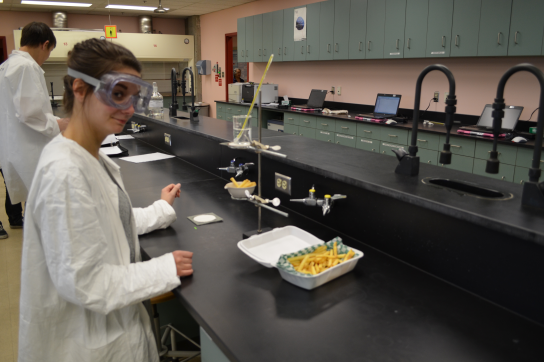Print Edition: March 6, 2013
In a calorie-obsessed society, I often find myself over-hearing conversations in eating establishments or grocery stores that leave me feeling either confused or distressed.
I was once in a store stationed next to a cinnamon bun dispensary, and I wondered out loud how the employees avoided the temptation with the smell of delicious baked goods wafting over. One employee stated matter-of-factly that, “each serving has over 1500 calories!” Everyone laughed and I stood there like they’d started speaking Dutch. “Is that a lot?” I replied, and was met with a hailstorm of judgemental looks from all around.
For those who don’t know the intricate calorie system, that’s roughly a whole day’s worth in one go. I had no idea at the time. It felt like I was missing out on a conversation happening nationwide.
Calories are, in the most basic terms, food energy. If a human is a machine, then calories are the gas that keep us going. If you aren’t getting enough, you will start to shut down. If you’re getting too many, you’ll struggle to work efficiently. Either way … not good.
The current way to figure out your recommended daily calorie intake involves math formulas and estimating your activity level. Start by figuring out your BMR, “Basal Metabolic Rate,” or in layman’s terms: how many calories your body needs for basic functions like breathing. So if you don’t get up and move (ever) this is the only formula you need. For (adult) women it’s 655 + (4.3 x weight in pounds) + (4.7 x height in inches) – (4.7 x age in years), and for men, 66 + (6.3 x weight in pounds) + (12.9 x height in inches) – (6.8 x age in years). To estimate your percentage of activity, range yourself in between 20 (everyday movement) and 60 (athletic training) per cent. So it would look like this: (original formula) + (BMR x activity percentage) = your recommended calorie intake to maintain your current weight. If you want to lose weight, reduce that number (talk to your doctor first) and if you need to gain weight, up that number.
Reading that made my head spin. Math? That’s for chumps! There has to be a more badass way to find out what my body needs instead of doing math or reading labels. I did some digging and found a different way: food calorimetry, which involves burning food to release its energy.
Setting things on fire? That reflects my inner badass. Except for one crash and burn attempt at a lab science, I’ve never spent much time in a legitimate laboratory. I went on my adventure to the root of “food calorimetry” all bright-eyed and bushy-tailed. Safety goggled-up and donned in a lab coat, (with supervision) I set up the experiment: a food sample (french fries) placed underneath a beaker of water with a thermometer in it. According to the lab write up, measuring the temperature change in the water and using a much smaller formula I could tell how many calories my food is worth.
What’s wrong with this scenario? Apart from my inexperience and general lack of science skills, the experiment doesn’t account for two major things. First, if we absorbed all of our food and didn’t, ahem, expel our waste the calculations would be correct, but since we do, this overestimates how much is absorbed into our bodies. Second, if we use the metaphor of humans as engines, experiments like this and BMR calculations don’t account for the other things we require to survive. Think of fibre, minerals and water—things that don’t have a caloric number—as if they’re oils and fluids. Although necessary to function, they usually go unaccounted for in the general upkeep of the whole.
In the end, my fries refused to set on fire, and I got zero reading on my thermometer. The final thing wrong with this scenario: I wasted delicious food, and for failed science no less! I think I’d rather leave the science to the professionals, and gratefully stay out of the calorie-counting conversation.
Special thanks to Matt Knott for making sure I didn’t set myself on fire, Jane Webb for graciously allowing me access to her lab equipment, and AfterMath for providing the food sample.


